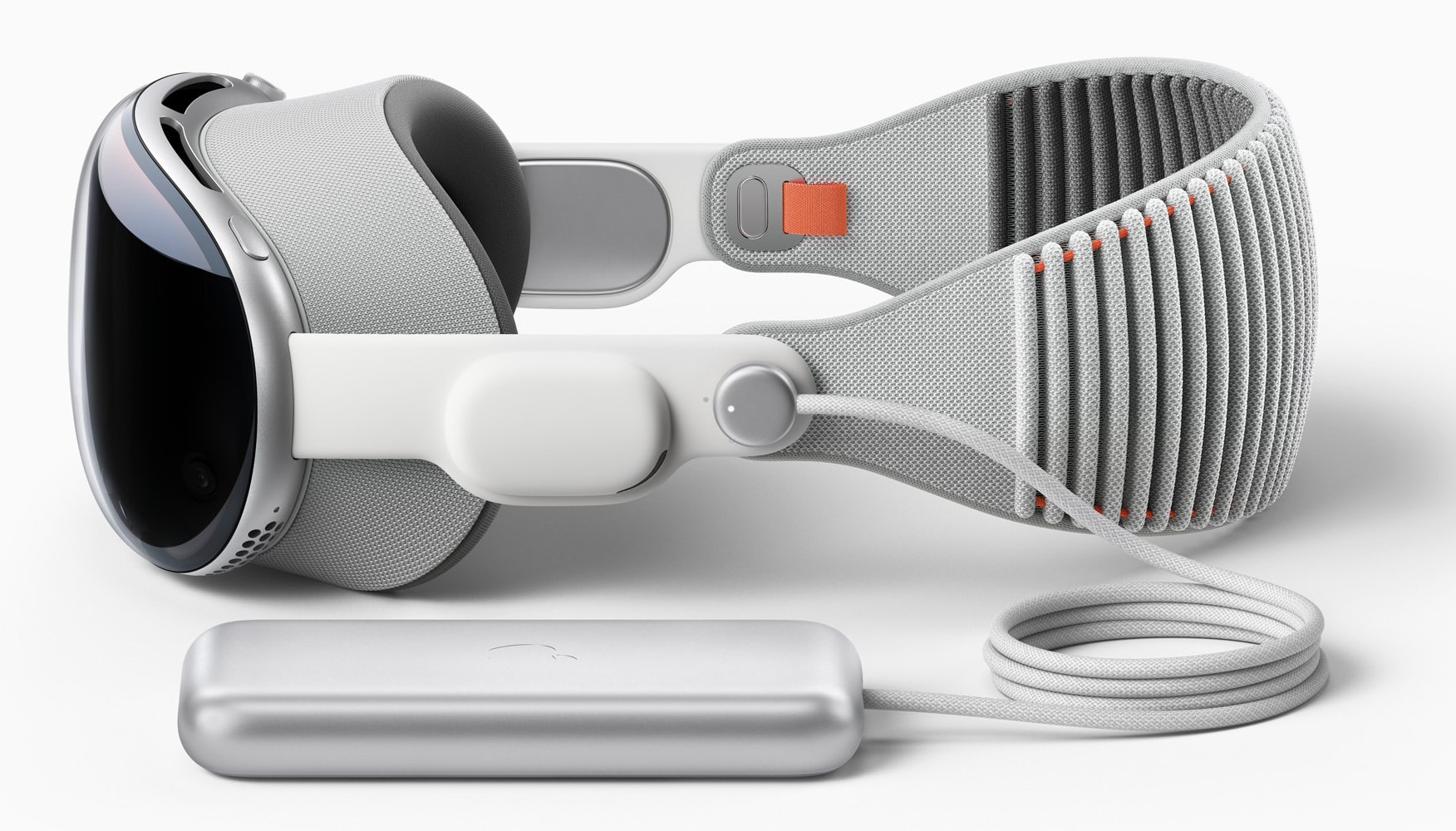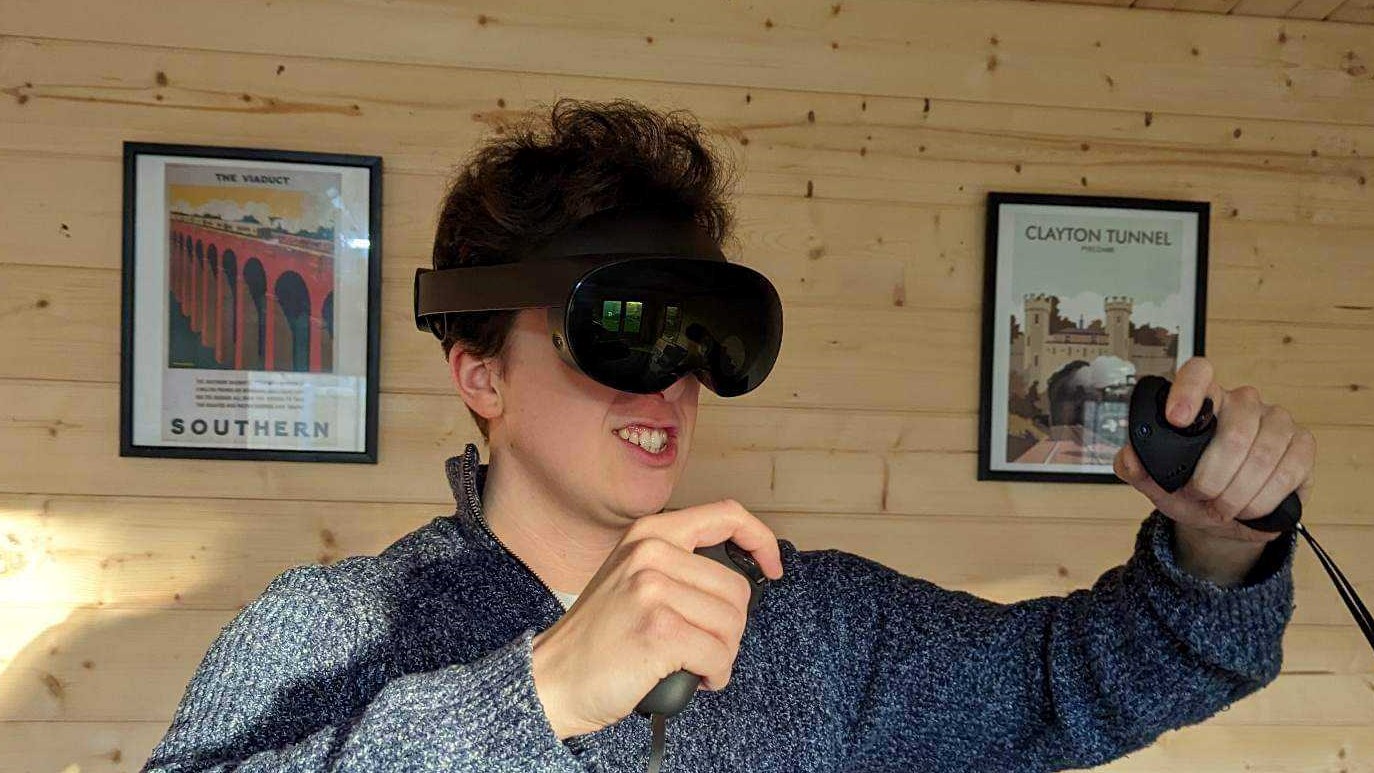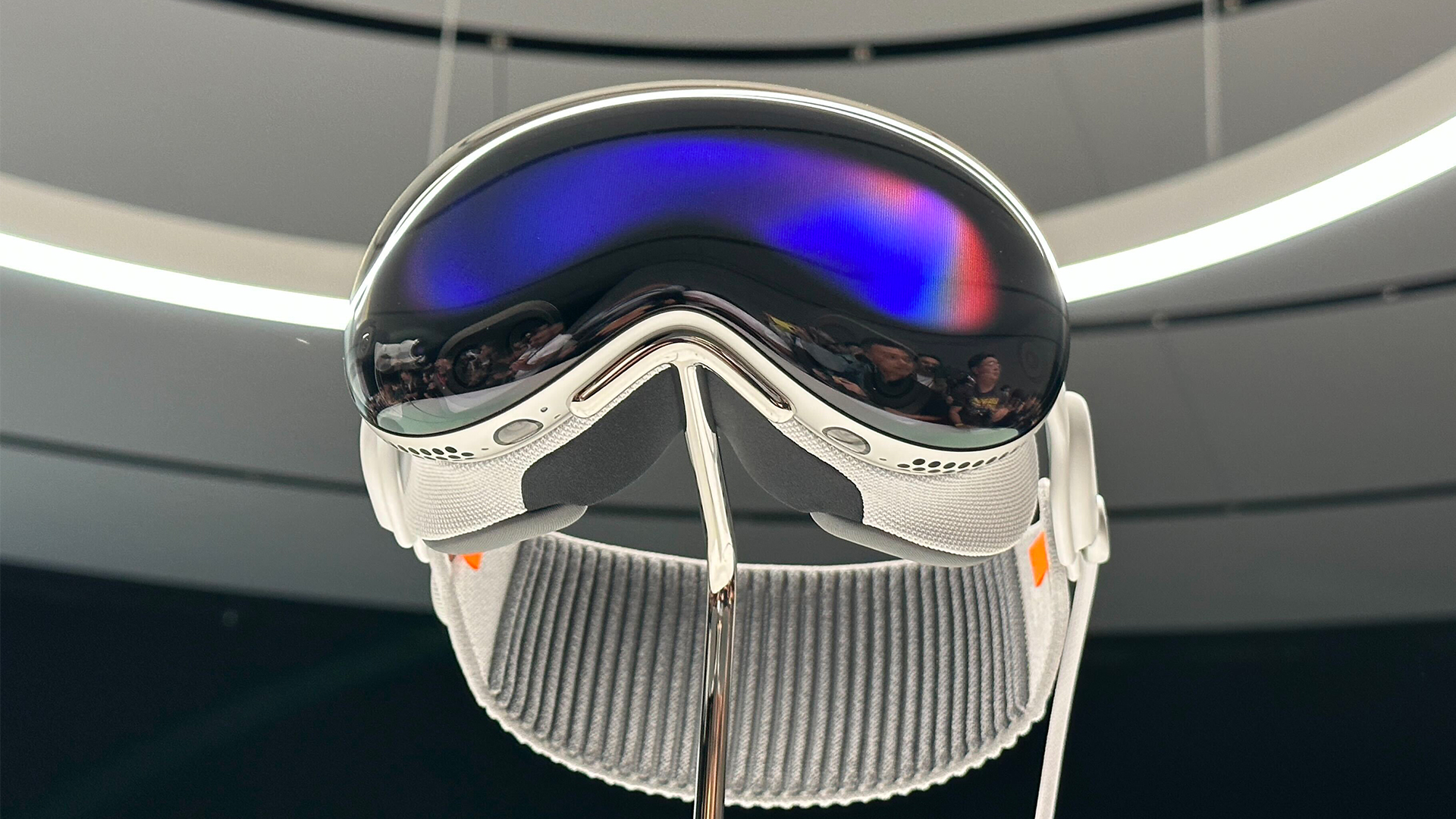Why I love this much-mocked Apple Vision Pro design feature
Opinion: I love the Vision Pro's external battery pack

The Apple Vision Pro rocked the VR world when it was announced at WWDC 2023, with Apple CEO Tim Cook revealing that it’ll boast some mightily impressive specs, a quirky design, and (disappointingly) a sky-high price.
While many who have tested the device have highlighted their love of it – TechRadar's Lance Ulanoff declared that he “wore the future” in our hands-on Vision Pro review – one element of the design has been mocked and derided by many: the external battery pack.
It's a smartphone-sized block that Apple says can be slipped into a trouser pocket. However, it's not clear how you'd wear the battery if you don't have a suitable pocket – there's no belt loop for example – and the wire running from the battery to the headset isn't the most elegant solution. The battery life is also rather short at two hours.
At first glance, it’s very much an un-Apple aspect of the design, and it certainly has some downsides. But I think it might be the best feature Apple has introduced, and I hope other VR headsets follow suit.
A Vision of VR’s future
Two of the biggest problems standalone headsets face – weight and usage time – are (at least in part) due to their battery. Because these kinds of headsets have to function independently, rather than being tethered to a computer or console. you need to cram a lot of parts into them, which increases the weight and impacts comfort and accessibility. Batteries make up a good chunk of this weight, and if you want a headset that’ll last for a while it needs a big heavy battery.

As VR headsets transition from something you might only want to wear for an hour, to something you might need to wear for most of the day (for work, play, and social reasons) they need to be light, comfortable, and last for a while. I tried wearing the Meta Quest Pro every day for work for a whole week, and the strain on my neck made it an experience I don’t want to repeat. The Vision Pro’s external battery pack could help it and other headsets hit the sweet spot for comfort and performance, and might convince me to give working in VR another go.
The obvious advantage is the battery’s weight is no longer carried by your head; it’s in your pocket instead. Apple hasn’t revealed how heavy its headset is, but those who have tried it say it feels lighter than other commercially available headsets like the Meta Quest Pro and Oculus Quest 2. So it should be more comfortable to wear for extended periods of time than rival devices.
The other upside is that, while Apple’s included battery pack can only deliver two hours of use on a single charge, an upgraded battery from Apple (or a third party) could keep you immersed for much longer without adding any weight to the headset.
Sign up for breaking news, reviews, opinion, top tech deals, and more.
It’s not entirely clear if the battery pack is removable, but it looks like it might be. Having the option to use a different battery to the one that's included could also explain why Apple said the Vision Pro “starts” at $3,499 (around £2,800 / AU$5,300). I can see more expensive Vision Pro options coming with extra battery packs – so you can charge one while using the other then swap them over when the first runs dry – or larger batteries to make them a worthwhile upgrade over the base model.
In defense of internal batteries
Having the battery in the main headset can have its benefits. VR headsets are traditionally front-heavy – with displays, processors, cameras, and everything else housed in a box that sits on the wearer’s face over their eyes. Newer headsets with slimmer 'pancake' lens designs have helped to alleviate this issue, but another way to combat this design problem is by putting the battery at the back of the headset’s strap.
The Meta Quest Pro uses this design, and its strap-bound battery serves as a counterweight to the other components. As a result, while it’s heavier than the Quest 2, it can feel like the Quest Pro is lighter and easier to wear.

What's more, while the battery pack cable isn’t going to be as annoying or restrictive as the one used by headsets tethered to a stationary console or PC – which can be easy to trip on or wrap yourself up in if you aren’t careful – it may sill cause distractions. You could catch your arm on it, or even just brush past it, and in those moments you may be ejected from your immersion and remember that you’re in your living room rather than some faraway place.
However, given the weight savings and battery life gains that could be had, these are compromises I’d be willing to make. We’ll have to wait and see if other headset makers follow suit, but some companies have already shown the advantages of stripping out the battery from their headsets – it was one of the positives I found in my HTC Vive XR Elite review, though the execution wasn’t perfect – and I hope others follow the Vision Pro’s lead.

Hamish is a Senior Staff Writer for TechRadar and you’ll see his name appearing on articles across nearly every topic on the site from smart home deals to speaker reviews to graphics card news and everything in between. He uses his broad range of knowledge to help explain the latest gadgets and if they’re a must-buy or a fad fueled by hype. Though his specialty is writing about everything going on in the world of virtual reality and augmented reality.